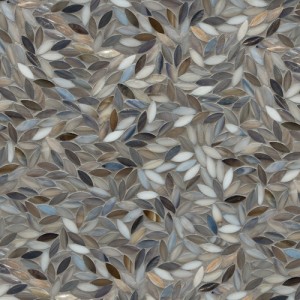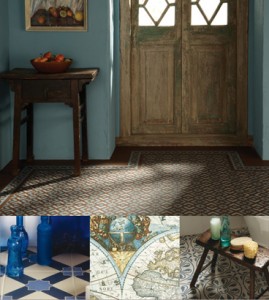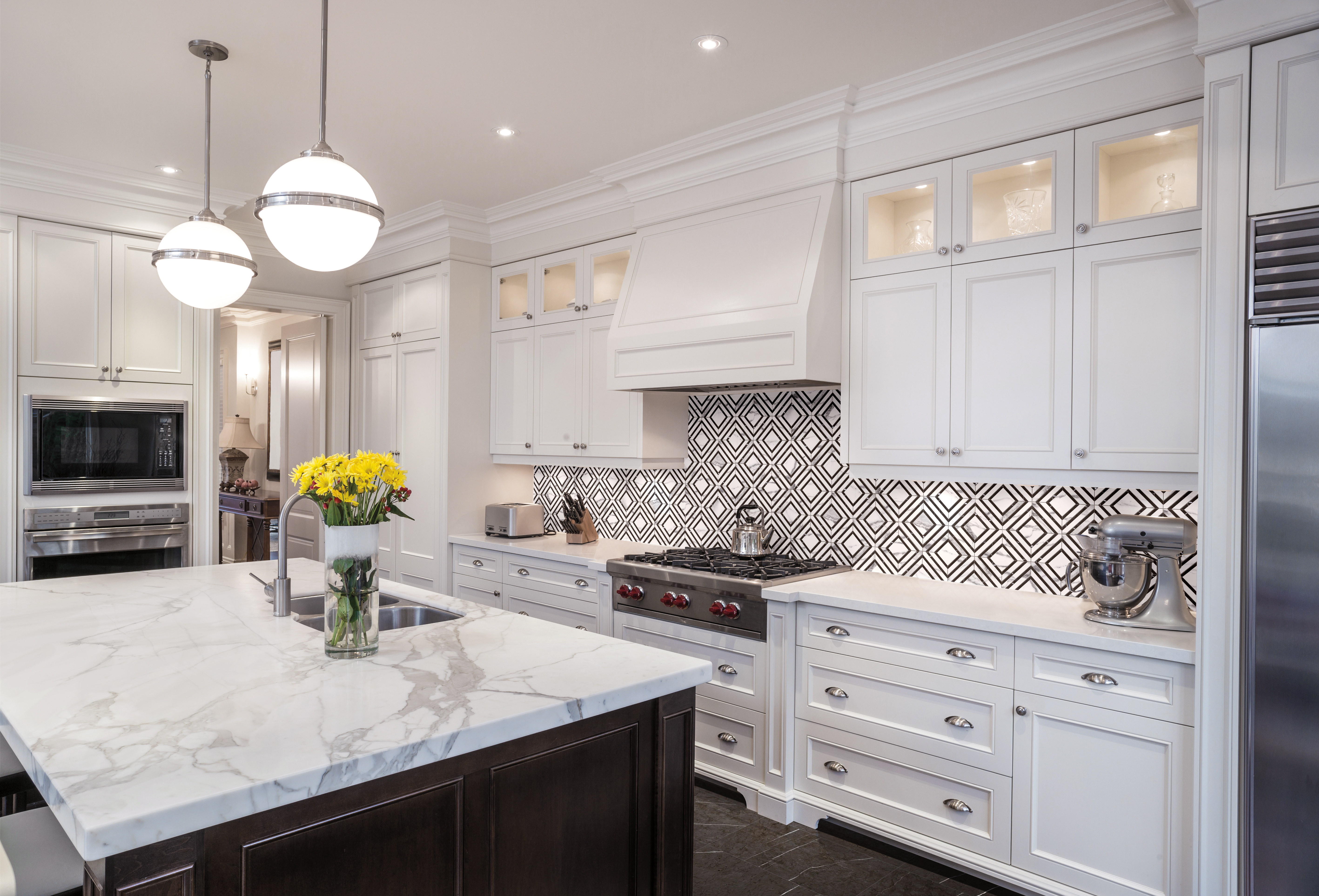From shimmering and textured mosaics to porcelain tile with wood, stone or concrete looks, the latest introductions in stone and tile offer inspiration for one-of-a-kind designs. Below are just some of the numerous products available on today’s market.
Ann Sacks – Pyrite Collection
The carefully composed tiles in the “Pyrite” Collection by Ann Sacks are a tightly hand-fitted mosaic that resembles a puzzle-like jigsaw that have undergone careful polishing and antiquing techniques exclusive to Ann Sacks. These methods reveal the reflective, luminescent qualities of the stone, and the result is a distinctive combination of a refined and raw look. Available in 6″ x 6″, 6″ x 12″ and 12″ x 12″ tiles, “Pyrite” comes in several finishes, including gold or silver antiqued, gold or silver polished, and a mix of both.
Artistic Tile – Foliage Collection
Organic and intriguing, “Foliage” by Artistic Tile is hand crafted of stained glass manufactured in the U.S. “Foliage” is a new addition to the “Jazz Glass” Collection and adds a sense of movement to any room. The mosaic tile is available in 14.75″ x 14.25″ x .125″ pieces.
Original Style – Odyssey Collection
The designs for the “Odyssey” tiles and matching borders from Original Style have been inspired by places and styles from around the globe and throughout the ages, from a humble rug found in a Moroccan bazaar to majestic palaces, from rustic Turkish pottery to the lost civilization of the Incas. “Odyssey” tiles are hand-finished so each one is a small, unique work of art and they are not mass-produced, they are made specific to order in Original Style’s Devon Studio. Take “Odyssey” into your home for your own global adventure, around the world in 20 tile designs.




